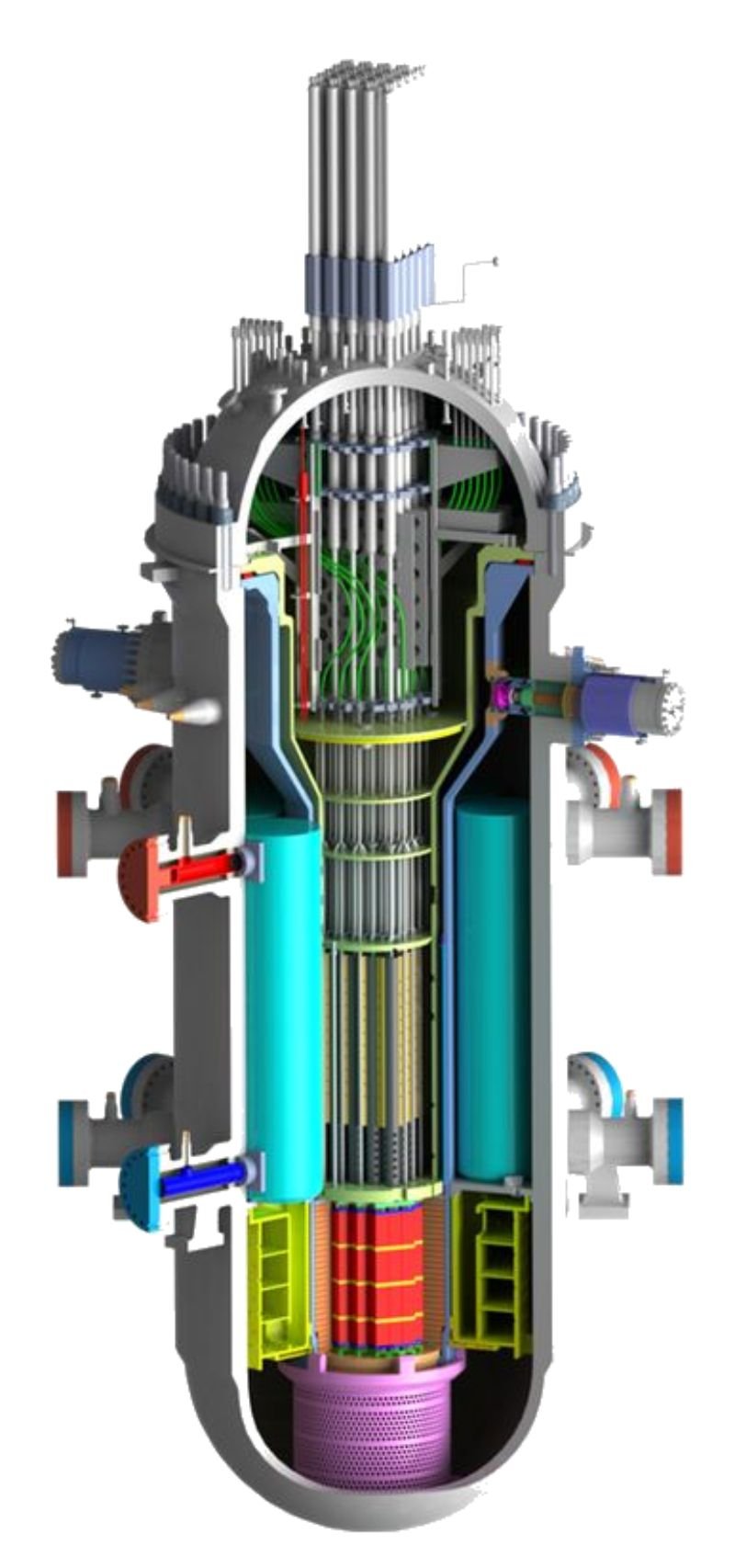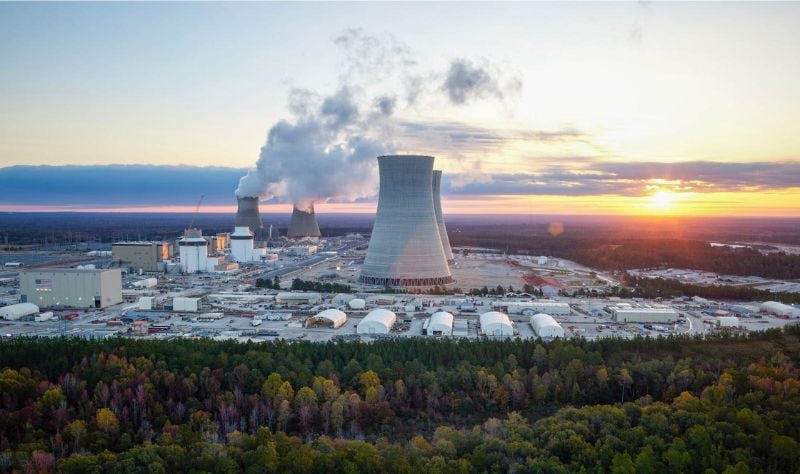Report: Strategies to Boost Advanced Nuclear Reactor Technology
An exhaustive report from the National Academies of Sciences, Engineering, and Medicine examined opportunities and barriers to bringing advanced nuclear reactor technologies to an increasingly renewables-heavy energy system.
A new report from the National Academies of Sciences, Engineering, and Medicine previews several ways the United States Department of Energy (DOE), the Nuclear Regulatory Commission (NRC), and other government agencies can leverage the potential of advanced nuclear reactors—a relatively nascent but promising field of renewable energy.
A small modular reactor design from the International Atomic Energy Agency’s Advanced Reactor Information System database. Image used courtesy of the IAEA
The 278-page report highlights new and advanced nuclear reactor concepts at varying levels of technical maturity, such as small modular reactors (SMRs), which evolved from existing light water reactors (LWR) in most plants today. SMRs have about a third of the generating capacity of full-scale nuclear facilities and are already gaining traction in the private sector. For example, NuScale’s SMR recently became one of the first designs cleared by the NRC for commercial use, and GE Hitachi inked a deal to build North America’s first grid-scale SMR. Per the International Atomic Energy Agency, several SMR concepts are in various stages of development worldwide, including 13 in the U.S.
More emerging applications covered in the report include liquid metal fast reactors and high-temperature gas reactors, with several small prototypes in operation worldwide. Others have a medium level of maturity, such as fluoride salt-cooled reactors and heat-pipe cooled reactors, as yet demonstrated at a reduced scale. Molten salt-fueled-cooled reactors have been developed without power conversion systems. The least mature concept is the gas fast reactor, in which no prototypes exist.
An overview of water-cooled, gas-cooled, molten metal-cooled, and molten salt-cooled reactor designs. Image used courtesy of the International Atomic Energy Agency
These designs bring great potential to America’s ongoing transition to renewables, an effort limited by the speed and scale of new infrastructure, the need for firm capacity when renewables are unavailable or insufficient, and the growth of decentralized generation via smart metering, demand response systems, and microgrids. New nuclear technologies would lend a substantial helping hand in the public-private push to electrify all facets of American society, from residential and commercial buildings to cars and transport systems to manufacturing and industrial activities.
The current decade is already seeing historic renewables deployment. And the National Academies study projects that some new advanced reactors will be demonstrated in the 2030s, coinciding with more electrification and decarbonization end-uses. By the 2040s and 2050s, these reactors can be cost-competitive with other technologies in a renewables-heavy electricity grid.
U.S. Nuclear Capacity
Zooming out from advanced reactor concepts, let’s take stock of the current nuclear power landscape: The U.S.’s 92 nuclear plants claim an 18.2% share of the electricity mix and half of all low-carbon energy sources, ahead of solar, land- and offshore-based wind projects, and other renewable energy systems.
According to the U.S. Energy Information Administration, nuclear capacity peaked in 2012 at about 102 gigawatts (GW) across 104 operating reactors. Growth has since been limited by declining profitability compared to fossil fuels and negative public perception tied to safety concerns.
About a dozen commercial sites have been decommissioned over the last decade. Another 21 reactors and 38 complex materials facilities are undergoing decommissioning today, according to the NRC. The average lifespan of a nuclear reactor is 40 years, with much of the nation’s current fleet on track toward decommissioning in the coming decades.
Georgia’s Vogtle Units 3 and 4 (pictured in the foreground) under construction in November 2022. They’re the first new reactors to be built in the U.S. in decades. Vogtle Units 1 and 2 (in the background) began operating in the 1980s. Image used courtesy of Georgia Power Company
Still, development hasn’t slowed entirely: The nation’s two youngest reactors came online in 2016 and 1996. Another two currently under construction in Georgia—Vogtle Units 3 and 4—represent the first new units built in the U.S. in decades and are expected to enter service later this year.
Meanwhile, the ongoing phase-out of fossil fuels, population growth, and expanded industrialization equate to an unprecedented demand for low-carbon energy sources like nuclear. The National Academies report argues that advanced nuclear reactors can help meet this demand if technical and financial gaps are addressed.
Electricity demand projections across three studies. Image used courtesy of the National Renewable Energy Laboratory
National Academies Recommendations
The National Academies report calls on the DOE to launch a research and demonstration program to improve fuels and materials performance, incentivize the use of modern materials science, and extend access to test reactors to hasten the deployment of new materials with better performance and less life-limiting degradation processes in structural materials such as reactor core components and cladding.
The researchers also suggested that the DOE revamp its Advanced Reactor Demonstration Program (mostly inactive since 2020) to add long-range funding for meeting staged milestones. It could also implement regular design, cost, and schedule reviews to downselect concepts for demonstration support.
High capital expenses are among the central barriers to advanced nuclear development. Civil work, such as concrete or steel structures and balance of plant (BOP), accounts for the bulk of total project costs (40-50%), while engineering, procurement, and construction claim a 10-20% share and owners’ costs claim 5-10%. Turbine generators and other equipment to build the nuclear island can account for 10% and 10-20% of the cost, respectively.
These investments could amount to as much as 80% of the plant’s lifetime energy cost, making subsidies and tax credits more attractive for developers. The report advises the DOE to expand its advanced construction R&D programs, noting that the agency’s $35 million in funding pales compared to the hundreds of millions allocated for researching nuclear island technologies.
The report says additional financial incentives outside of the Bipartisan Infrastructure Law and Inflation Reduction Act will be needed to spur future commercial activities. The former, passed in 2021, introduced a $6 billion Civil Nuclear Credit program to rescue plants at risk of closing due to financial losses. The latter, enacted last year, provides a $15 per megawatt-hour tax credit for electricity produced at nuclear plants.
Finding skilled labor is also a challenge. The National Academies report calls for nuclear owners/operators to consider creating a consortium or joint venture for construction experience. The DOE should build a multi-agency partnership to address workforce demands, teaming up with construction training programs, universities, commercial nuclear facilities, and national laboratories with existing workforce development infrastructure.
On the regulatory level: The NRC has a lot of work to do, as existing regulatory requirements don’t sufficiently accommodate the many distinctions between advanced reactors and incumbent LWRs. The report argues that Congress should provide tens of millions of dollars in additional annual funding to the NRC for staffing, expediting new guidance on siting and emergency planning zones, and updating its security requirements.
And since advanced nuclear reactor development is taking shape worldwide, with some countries already ahead of the U.S., international projects by U.S. exporters are likely to require financing packages reflecting federal grants, loans, guarantees, and other financing channels. The report calls for the U.S. to develop a plan to extend long-term financial and technical assistance for capacity-building in partner nations.
National Academies also issued recommendations for improving public perception, which partially influenced nuclear’s decline after the Chernobyl, Fukushima, and Three Mile Island nuclear accidents. It suggested various community engagement strategies, such as extending communities the right to veto or opt out until an agreed-upon milestone or providing partial funding for independent analyses.










